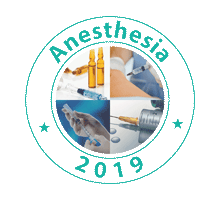Karzan Seerwan Abdulla
University of Sulaymaniyah, Iraq
Title: Surgical management and outcome of complex bile duct injury after laparoscopic cholecystectomy
Biography
Biography: Karzan Seerwan Abdulla
Abstract
Background: There are many causes of bile duct injury. Iatrogenic bile duct injury, being the most common cause; Bile duct injury is one of the complex situations produced by a surgeon in apparently healthy patients and is associated with a significant rate of morbidity and a low rate of mortality. It needs multidisciplinary team approach between surgeons, radiologist and endoscopist. It offers better chances for an initial diagnosis, treatment options, management and follow-up of complications for the patient. We considered complex injuries: 1) injuries that involve the confluence; 2) injuries in which repair attempts have failed; 3) any bile duct injury associated with a vascular injury; 4) or any biliary injury in association with portal hypertension or secondary biliary cirrhosis. The present review is an evaluation of our experience in the treatment of these complex biliary injuries.
Objectives: To review surgical management of complex bile duct injury, review morbidity and mortality following surgical repair.
Method: We retrospectively analyzed surgical management and outcome of complex biliary injuries following cholecystectomy in 29 patients diagnosed intraoperatively following cholecystectomy or referred post operatively to our center in Sulaymaniyah governorate from January 2013 to March 2018.
Result: During the study period we have managed 59 cases of bile duct injury which they have referred to our center or consulted during cholecystectomy. Twenty nine patients were selected according to our selection criteria. Nineteen patients were female (65.5%). 21 patients with confluence injury, 5 patients with previous attempt by general surgeon, 2 patients with vascular injury and one patient with portal hypertension. In 27 patients, we performed mucosa to mucosa anastomosis between hepatic ducts and Roux-en-Y loop of jejunum. In 2 patients we performed portojejunostomy as a salvage procedure. Six patients developed stricture within 6 months for which we performed re-do anastomosis. We referred 3 patients for liver transplantation. Two patients died within 10 days of surgery because of sepsis. Both patients of porto-eneterostomy developed stricture and subsequent biliary cirrhosis.
Conclusion: Complex bile duct injury has bad prognosis and affect quality and quantity of life of the patients. The proximal the injury worse the prognosis; Porto-enterostomy has very bad outcome.

